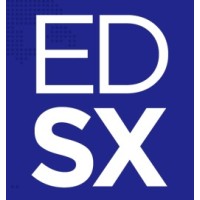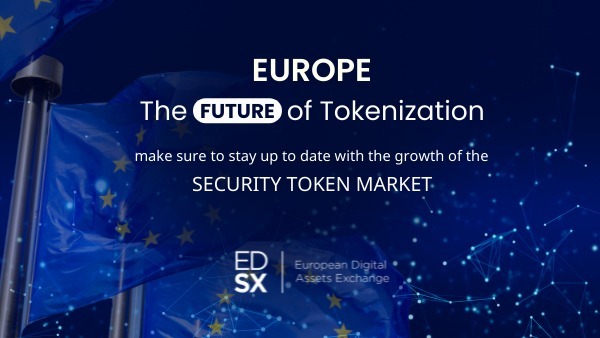Through the overall growing market’s metrics – a variety of influential organizations creating their own tokenization solutions – and the high valuations that tokenization startups get more and more often, it’s possible to witness the stage of exponential growth of the tokenization industry. At the moment, Europe’s future of tokenization is the most promising with overall promising legislation for STOs.
European STO market
The European security token market is evolving fast. Just in the course of 3 years – starting with the first reported security tokens in Europe in 2017 – the number of such assets grew a hundred times by 2020.
The Frankfurt School of Finance and Management, Plutoneo, and Tangany conducted a study that found the European security token market expects to grow approximately 81% annually over the next five years. The study projects the market will reach €918 billion by 2026. Its market volume could surpass the cryptocurrency industry in the next five years.
The Legislative aspect
Since ICOs began trending and evolved into STO mania, European and global regulators have worked to fit this new financial tool into existing rules. They also strive to adapt it to current laws. Starting in 2020, some EU nations introduced licenses for digital asset storage. Now, those countries develop laws enabling assets to be tokenized.
In the early days, as the United States decides its path, European nations largely set the course. Truthfully, watching security tokens in Europe influenced Asian governments’ diverse responses too. Observation there inspired quite varied approaches across Asia as well.
Current regulations in Europe and Switzerland
European Union level doesn’t provide a specific regulation on security token offerings at the moment. Nevertheless, STOs may be subject to various current EU securities rules and regulations.
The European Commission issued a draft proposal for a regulation on crypto asset markets in September 2020. This proposal aimed to encourage the use of Distributed Ledger Technology in financial services. The Commission had conducted a consultation on crypto assets that ended in March 2020 before drafting the proposal. This regulation, which will include MiCA (Markets in Crypto-Assets), will be released by 2023 at the latest and will serve as a complement to the existing MiFID II regulation of traditional financial products and activities.
Of course, the new legislation serves as one more factor accelerating the trend of decentralized finance; it is clear that the goal of establishing a unified digital asset market is praiseworthy.
Geographically speaking, Switzerland is part of the EU and must be noted as one as the leading countries in this area.
Why? Not only it’s been the first, but it’s also one of the few countries to allow shares tokenization and peer to peer exchange to legally transfer digital financial securities. Switzerland has an STO friendly Market Authority, and it’s able to grant a quick response to every request.
https://www.edsx.ch/blognews/whats-the-winning-combination-of-sto-and-switzerland
Specifically, the legislation & regulations are the following:
Prospectuses and offering memorandums serve an important purpose for investors. If funds raised exceed certain thresholds, lengthy prospectuses must be filed. In Europe and Switzerland, these thresholds are €8 million and CHF8 million respectively. Prospectuses provide thorough details about the issuer, securities, and associated risks. For amounts within these limits, shorter offering memorandums suffice. But both document types aim to fully inform would-be investors before participating. Clear disclosure allows the public to make wise decisions with open eyes. Whether a prospectus or memorandum, compliance protects everyone by promoting transparency from the start.
The prospectus and the memorandum have the same function, with the difference that the prospectus must be authorized by a market authority: a European one in Europe (for example BaFIn, Consob, AMF, BME and others) or by FINMA in Switzerland.
When one of these authorities authorize the prospectus – and thus the public offering – the European Passporting procedure can begin, which allows the public offering to take place in other European countries.
Please note that there is a difference between an offering and the actual amount raised. The 8mln threshold (€ or CHF) is not referred to the collected amount by the project but to the amount offered to the market.
This procedure is valid for every type of security token.
AML & KYC
AML and KYC regulation present another legal issue for ICOs and STOs. Anti-Money Laundering rules aim to curb illicit finance. National and international bodies mandate these rules. Financial firms must screen clients and monitor transactions. The Know Your Customer process helps identity clients and comprehend their finance habits. Both AML and KYC represent crucial steps for major exchanges. Overall, firms must verify customers to adhere to these compliance standards.
…We’ve already discussed this topic in one of our previous articles; go check it out!
https://www.edsx.ch/blog-news/what-do-you-need-to-know-kyc-aml

Based in Zug, the platform is fully compliant with all Swiss laws related to financial intermediaries, banking, anti-money laundering, and organized trading facilities. Among its core values, there are innovative solutions through blockchain technology, which ensures security and liquidity.
EDSX is the first platform in Europe with primary and secondary markets for both institutional and retails. EDSX is a pioneering platform that employs the world’s leading technology to globally list security tokens in both primary and secondary markets, listing digital securities of real financial instruments to the public with a decentralized peer-to-peer exchange. Our goal is to fully engage every aspect of the financial revolution.
Do you have a question for us?
Send your query here:
[email protected]



